The artist talk is a peculiar form of presentation, a sincere attempt to communicate something beyond the work of art. For most artists, the artwork itself is the language. Artists choose visual mediums because they most clearly convey a maker’s ideas. But, of course, we love to hear artists speak about their work, and for many artists, it is an honor when viewers seek to know more.
The talks below feature artists who sincerely produce work intended to stimulate change. New paradigms are born from viewing outmoded systems in fresh ways. In order to create an upgraded world, we begin by embodying it. These artists are inviting us into their invented worlds: universes where hair braiding is valued as high art, and the significance of human life is not based on socially constructed delineations such as gender and race. When we encounter these works, we have no option but to transform our thoughts, not only about subjects, objects, and people we may encounter each day but also about ourselves, the world around us, and creative output in general.
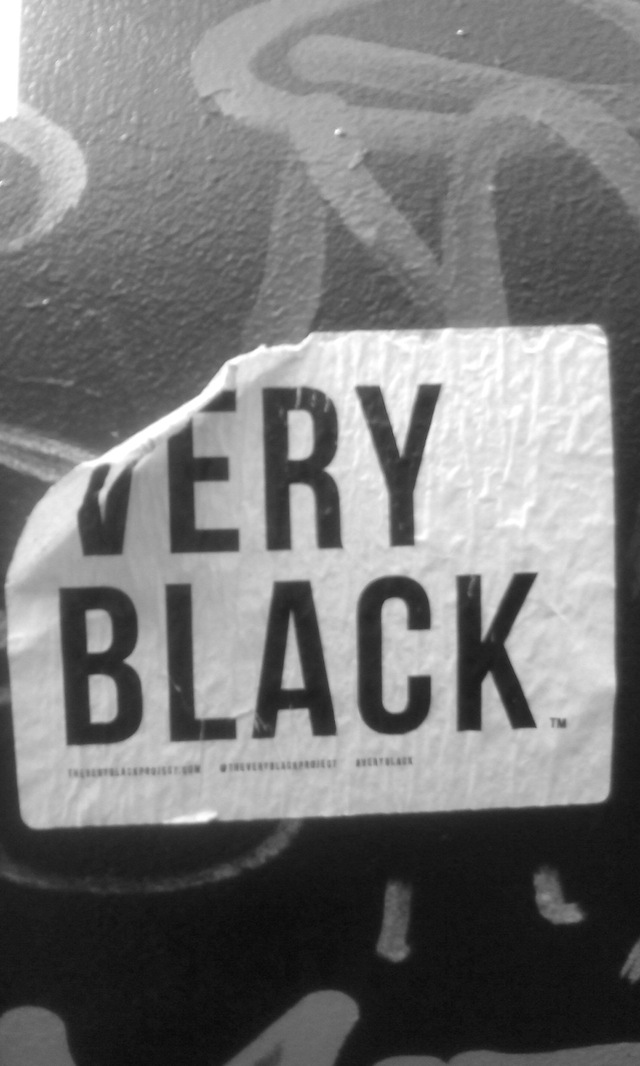
Damali Abrams, 2015. A sticker seen on 125th Street, on the way to an artist talk at the Studio Museum in Harlem, representing the Very Black Project, a contemporary Black pride movement spearheaded by André D. Singleton and Justin Lee Fulton, which spreads a message of empowerment through social media, stickers, and T-shirts. Courtesy Damali Abrams. © Damali Abrams
#VeryBlack
Some of us try not to be, try real hard to be, are embarrassed or ashamed to be, try to bleach it or lye about it; it will not leave willingly; it will haunt you in the rhythm of the subway train running across the track—black black black.
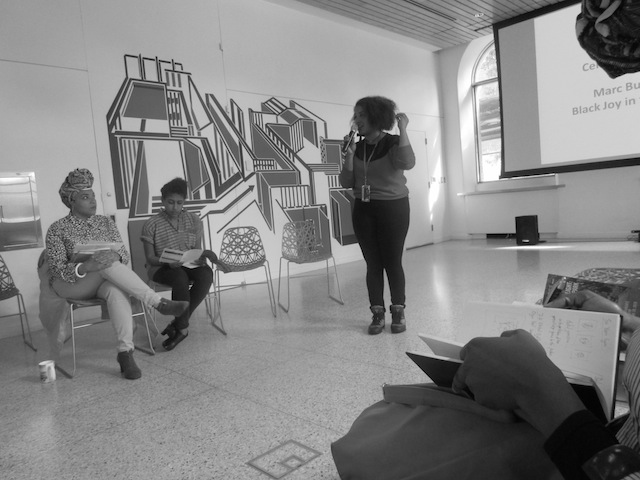
Damali Abrams, 2015. The poet LaTasha N. Nevada Diggs and the artist Shani Peters look on as Suhaly Bautista-Carolina from Creative Time introduces the “Black Joy Salon” at El Museo del Barrio, based on themes in Marc Bamuthi Joseph’s work, Black Joy in the Hour of Chaos. Courtesy Damali Abrams. © Damali Abrams
#BlackGenius
We know the answer, we invented the question, you are afraid to ask, we keep it too real, tell it like it is, real talk. Nikki tried to tell you [Giovanni, not Minaj] even our errors are correct; we birthed you, ungrateful offspring, and yeah we saw this coming and stay letting you (electric) slide.
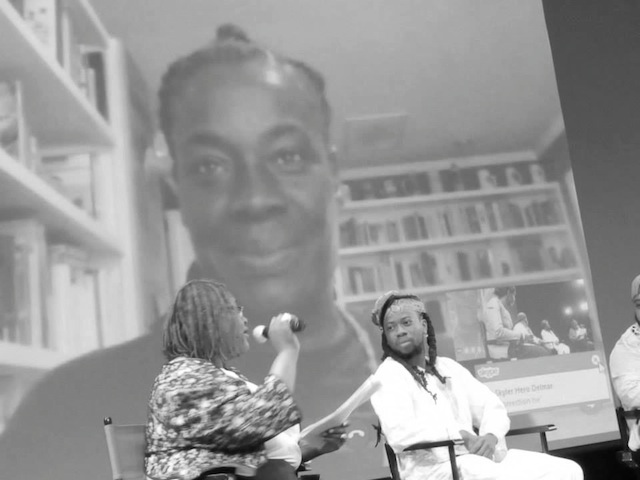
Carolyn A. Butts, 2015.Clairesa Clay of Reel Sisters with the filmmakers Seyi Adebanjo and Skyler Cooper (onscreen) at “Pride & Gender: A Film Conversation” at Kumble Theater. Courtesy Carolyn A. Butts. © Carolyn A. Butts
#BlackBeauty
We are your fetish, your magic charm; you save bits of us for later—that you may one day raise the roof or get down with your bad self but, alas, you will never catch up, you are perpetually played out.
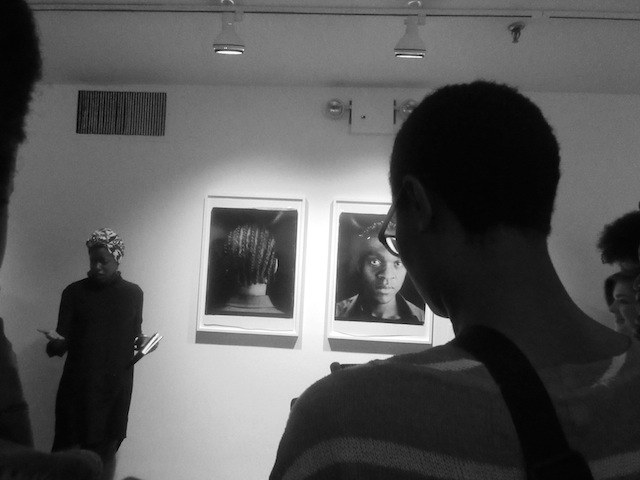
Damali Abrams, 2015. The artist Nontsikelelo Mutiti, leading a tour of the exhibition Salon Style at the Studio Museum in Harlem. Courtesy Damali Abrams. © Damali Abrams
#BlackMagic
We are shape shifters. You want to pin us down; you want to understand; you won’t. No matter how much of us you consume, we regenerate like Bébé’s Kids; we multiply and, damn, how we stay so fly?
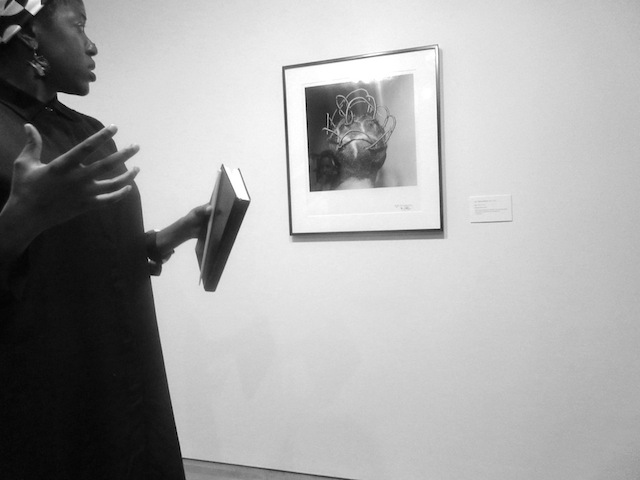
Damali Abrams, 2015. The artist Nontsikelelo Mutiti, at the Studio Museum in Harlem. Courtesy Damali Abrams. © Damali Abrams
#BlackHair
Oh, how you long to touch it, fascinated by its resilience, its strength, its ability to withstand, its ability to stand tall, it is calling you by name, luring you in, it says no but means yes; you can’t help yourself, but you do anyway, always.

Damali Abrams, 2015. Professor Tanya Katerí Hernández, at El Museo del Barrio. Courtesy Damali Abrams. © Damali Abrams
#BlackRage
Shhhhhh, don’t let them see it; hide it behind them grins and lies: I’m fine, you’re fine, we’re fine, how was your weekend; don’t tell them about that time you cried Friday night ’til Monday morning or ate ’til you couldn’t move or didn’t have an appetite for three months and then your butt started to shrink so you made yourself start eating again; never tell, always smile.
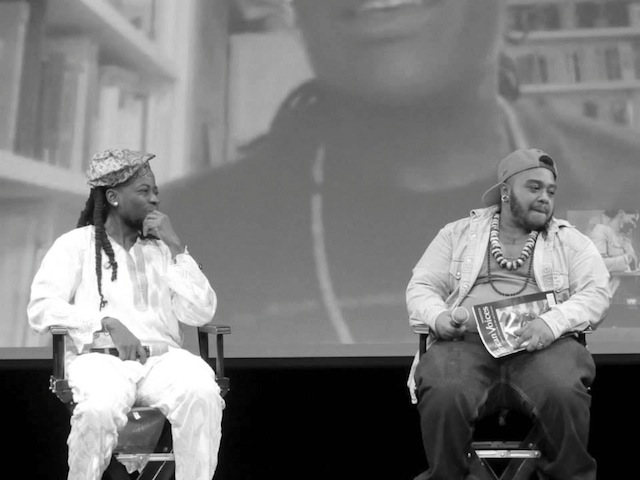
Carolyn A. Butts, 2015. Seyi Adebanjo, and Sasha Alexander of Black Trans Media, at Kumble Theater. Courtesy Carolyn A. Butts. © Carolyn A. Butts
#TrueStory
We are the truth; we are the stories; we are the tellers; we are the makers; we are constantly consistently reclaiming our autonomy; you no longer own us though you may still profit from our ideas, our beauty, our genius, our truth is that we are limitless, and that is why we have always been so willing to share; sure, come live on this island; sure, we will take these shells; this land has no owner, no beginning, no middle, no end. Just truth.
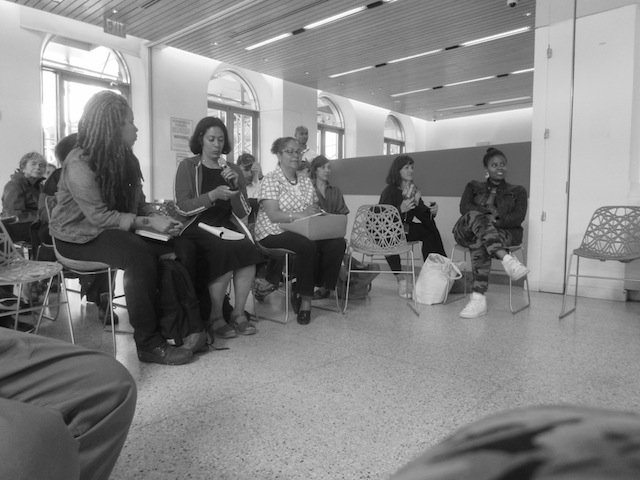
Damali Abrams, 2015. Audience members during the artist Alicia Grullon’s presentation at El Museo del Barrio. Courtesy Damali Abrams. © Damali Abrams
#postracial or #postBlack
But we have a Black president; doesn’t that count for something? Doesn’t that mean racism is dead? Doesn’t that mean that all of these Black people being murdered, beaten, harassed, brought it upon themselves? I mean, what were they thinking—running, or talking back, or selling bootleg cigarettes, or buying Skittles wearing a hoodie, or going to an integrated pool party?
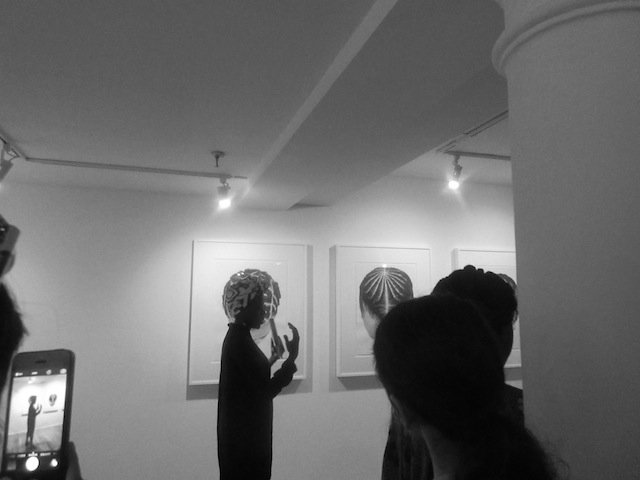
Damali Abrams, 2015. Nontsikelelo Mutiti at the Studio Museum in Harlem. Courtesy Damali Abrams. © Damali Abrams
#BlackJoy
Remember that time they tried to erase us, banned our drumming, banned our Mamas like Oshun and Yemaya, banned our languages, banned our literacy; but, oh shit, look at us now, still here, still beating, still reading, still breathing, still mattering; can’t stop, won’t stop; ten thousand years from now, we’ll still be on top; Ntokaze been gave us our Black girl song; maybe now we can work on our happily ever after.
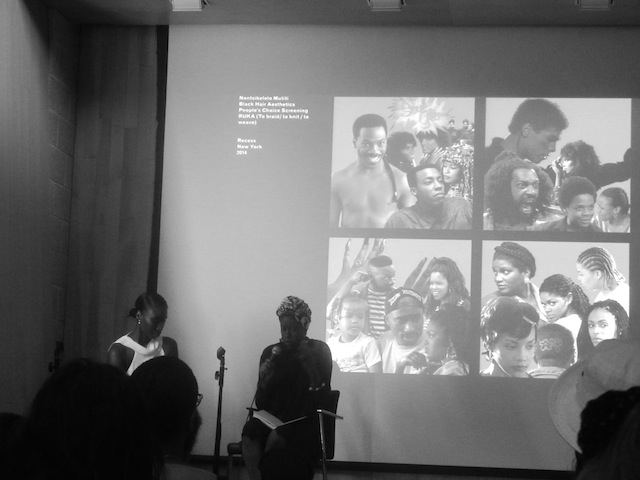
Damali Abrams, 2015. Amy Sall, the editor-in-chief of SUNU, and Nontsikelelo Mutiti at the Studio Museum in Harlem, discussing the ways that hair braiding is utilized as an art form and business opportunity throughout the African diaspora. Courtesy Damali Abrams. © Damali Abrams
#BlackOut



